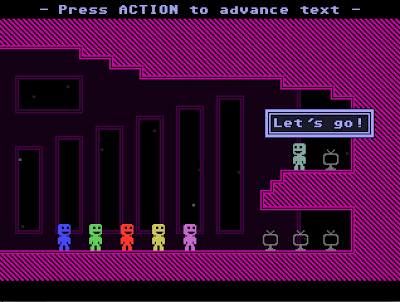The Short
Pros
- Heavy score-based, Geometry Wars-esque duel stick shooter
- Music is awesome
- Branching paths based on how well you score in a level add replay value
- High number of levels and multiple endings
- Provides a genuine challenge on the "Insane" levels
- Very fast. Burst mechanic helps keep the action going.
Cons
- Requires a lot of repetition in order to fully master
- Steep learning curve
- Failing a run near the end can be very frustrating
- Have to replay certain levels multiple times in order to access the harder difficulties
- Title, as well as the female "moaning" sounds in the menus (while more goofy than sensual) seem a bit crass
- Graphics are bland compared to other score-based bullet hell games like Geometry Wars
 |
| If you like quick, score-based duel stick shooters, you might want to check this game out. |
The Long
Scoregasm, stupid name aside, does exactly what you think: is a duel-stick, bullet-hell shooter with an extremely heavy emphasis on score. For fans of games like Geometry Wars that provide a fun challenge while still being balls-out hard will find a lot to love here, though a few minor niggles take what could have been a hardcore score-based shooter and make it a little weak.
 |
| Hope you are good at dodging bullets. |
First the good: Scoregasm is always fast and always has a very solid sense of progression. One of the main problems with score-based duel stick shooters is that they always start off really slow (Geometry Wars being a big offender). So when you mess up, you know you've got about five minutes of boredom before the game actually gets crazy. Scoregasm fixes this by having each stage be very short, and having the insanity escalate quickly even on the easiest difficulties. You have to beat a level with a specific score to unlock the next one, and the higher the score you get the higher difficulty stage you can unlock. You do get to pick, so if you do really good but still want to stay on Normal you can, or you can just blast your way up to Insanity and start praying.
 |
| In order to unlock more difficult stages you have to play better and better. |
The overall concept is simple: use either a controller, mouse and keyboard, or just mouse to duel-stick shoot everything. The game also has a "Burst" mechanic, which blasts a small nuke within a radius around you that kills bullets and enemies alike. The more enemies you kill the more powerful your weapon gets (and the faster more Bursts unlock), so if you can keep a really long chain and protect yourself with Bursts you'll be able to blast your way to a great score. Each level is usually 3-4 minutes long at the most, which means replaying to unlock more levels isn't as frustrating as it might have been. With the levels displayed as branching paths, the incentive to unlock and clear them all grabs you right in.
 |
| Some levels have unique qualities, like this spinning wheel of death. |
Graphically the game looks decent. It doesn't have the same fantastic, flashy style of Geometry Wars or the 3D, gorgeous look of Super Stardust HD, but as it stands it is still decent looking. A big problem, though is that the background elements tend to look a lot like enemies, which can throw you off. I appreciate trying to make an interesting backdrop to my shooting, but when it interferes with gameplay I have to say "no thanks."
The music is excellent. Again, it isn't Geometry Wars or Super Stardust HD quality, but it provides a kicking enough tune to keep your blood pumping as crazy stuff goes on all over the screen.
The weird girl screaming/moaning/orgasming whatever sound that happens in the menus and sometimes in the levels is pretty tacky and crass, though. I get they were going with their "Scoregasm" theme, but really? We already knew you named your game this to get attention out of the indie crowd, but that's kind of pushing it into "tasteless" territory.
 |
| It does a good job keeping track of all your progress |
At $10, Scoregasm is pushing it a little. For fans of the genre it probably would be a solid investment, but if you just sort of like these kinds of games I'd get the demo first. Again, I got it in an indie bundle, so for me it was totally worth the cost (and I plan on playing it again tonight, since the Mac Steam version finally showed up), but honestly I'd wait for a $5 sale, or if they package it in their usual Steam Indie collections during their sale months.
It's a solid game, but there are a lot of these types of games around, and this one only does a little to differentiate itself from the crowd. Minus adding "-gasm" to the end of its title. Three out of five stars.
It's a solid game, but there are a lot of these types of games around, and this one only does a little to differentiate itself from the crowd. Minus adding "-gasm" to the end of its title. Three out of five stars.
 |
| It's not easy being green... |










































